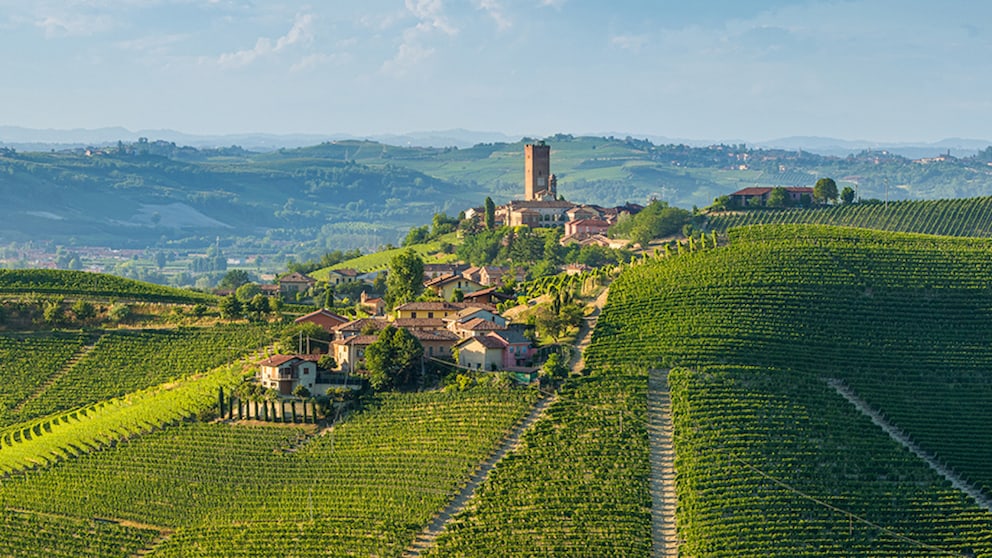February 16, 2025, 9:49 am | Read time: 5 minutes
Hiking, cycling, swimming – everything is possible in the hills of Langhe Roero. But most people also come to the northern Italian region for the famous Barolo wine and the food. TRAVELBOOK reveals what makes the region the perfect alternative to Tuscany.
Gently rolling vineyards, castles perched on hills, and snow-capped Alpine peaks on the horizon – around the municipality of Barolo, Piedmont in northern Italy looks like paradise on earth and is dotted with medieval villages, world-class wineries, and top restaurants. In autumn, in particular, connoisseurs make a pilgrimage to the Langhe Roero region south of Turin for its truffles and wines. It may be smaller than Tuscany, but it is in no way inferior in terms of beauty.
Overview
Wine Made the Langhe Roero Region in Italy Rich
The hills of the Langhe and Monferrato were only declared a UNESCO World Heritage Site in 2014. Among the wines, Barbera d’Alba is well known, and Barolo is famous. There are numerous wineries in the area. Some of them offer excellent food and drink.
Not so long ago, today’s vacation paradise was a rather dull area. “Our region was bitterly poor until a few decades ago,” says Massimo Camia. He was born a few kilometers from Barolo and is now a star chef. There are numerous Michelin-starred restaurants around Barolo. The Antica Corona Reale in Cervere even has two stars, while the Piazza Duomo in Alba has three. Gourmets now come here for these starred restaurants alone.
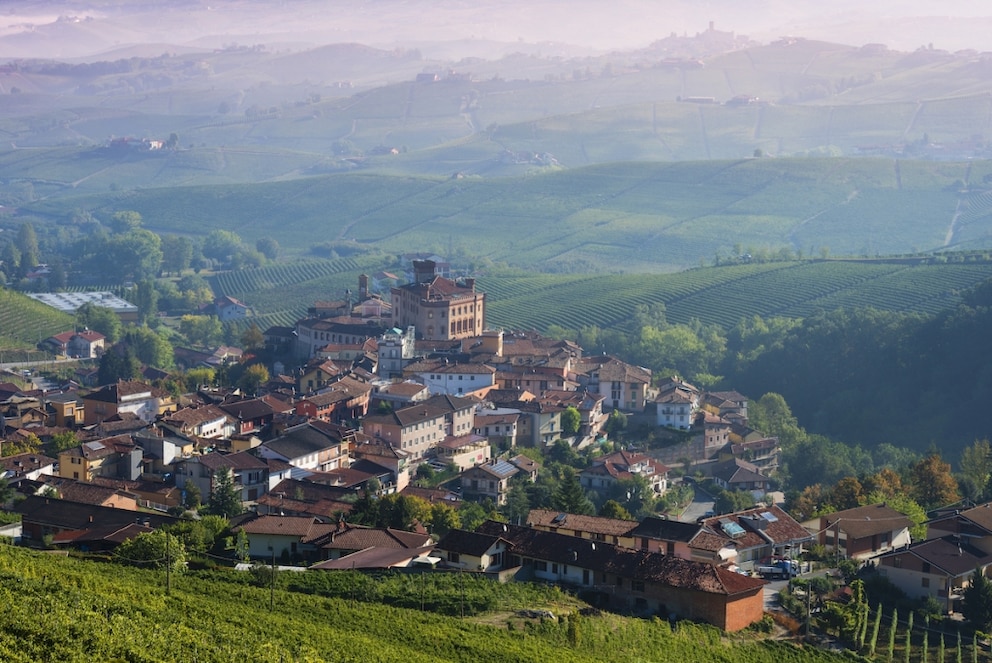
However, Camia is realistic enough not to attribute the upswing to his own guild. “Without the winegrowers and their Barolo, none of this would exist here,” he emphasizes. Wine has brought prosperity, even if it needed help from France. Until the end of the 18th century, Barolo, which was made from Nebbiolo grapes, was a sweet, cloying wine. It must have turned the stomach of Marchesa Giulia Falletti di Barolo, who came from France. In 1850, the margravine, therefore, called the French cellar master Louis Oudart to her castle, which today houses a wine museum in the middle of Barolo’s maze of alleyways with wine stores, bars, and restaurants.
Cellar master Oudart pressed dry, high-quality red wines from the Nebbiolo vines, which also won over Count Camillo Benso di Cavour. He was not only the wine estate manager at Grinzane Cavour, but he was also Italy’s first prime minister.
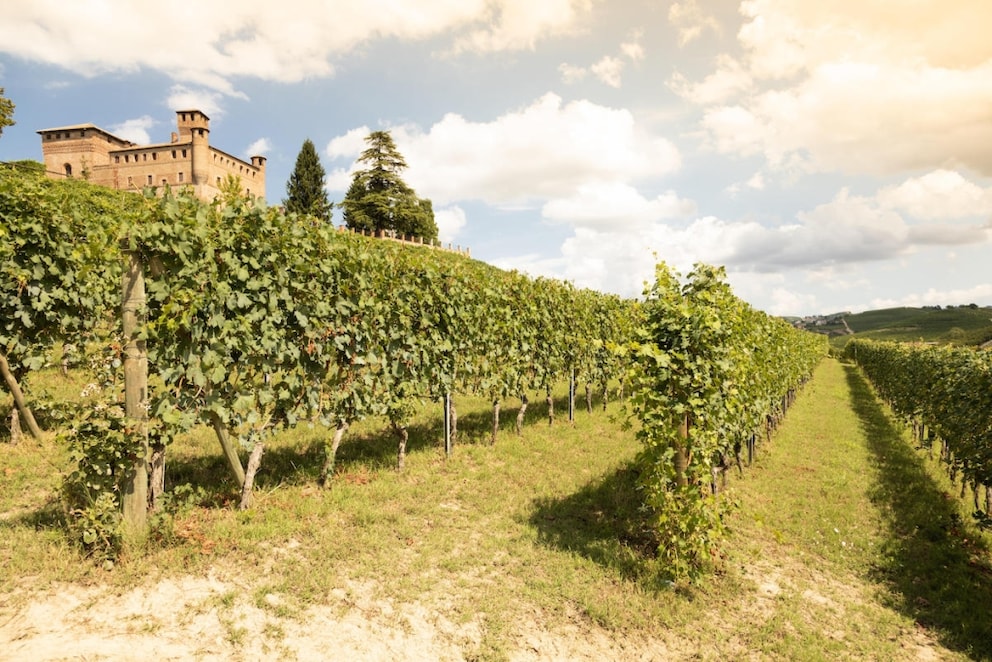
Strict Regulations Ensure Quality Today
The history of wine really began with Cavour and his good connections to the royal house of Savoy, where Barolo soon became the favorite wine at the Turin court. However, the boom was short-lived due to the world wars, the phylloxera plague, and the methanol wine adulteration scandal.
In the 1980s, many mediocre Barolos were sold off. The Nebbiolo plots were not worth much either until a new generation of winegrowers began to produce more harmonious wines. Modern cellar technology, the use of small barrique barrels, and a reduction in harvest quantities brought Barolo back to the top.
Barolo Must Be Aged for a Long Time
Barolo may only be made from Nebbiolo grapes grown and vinified in Barolo and ten surrounding villages. It must be aged for at least 18 months in wooden barrels and a further 20 months in the bottle. For the Riserva quality, this period is an even further 44 months.
Barolos are very storable thanks to their relatively high tannin and acidity. They only develop their complex and elegant character after ten to 20 years. The entry-level price is around 25 euros per bottle, but connoisseurs now pay several hundred euros for a first-class Barolo Riserva. “Especially for Barolos from the single vineyard Cannubi,” explains star chef Camia.
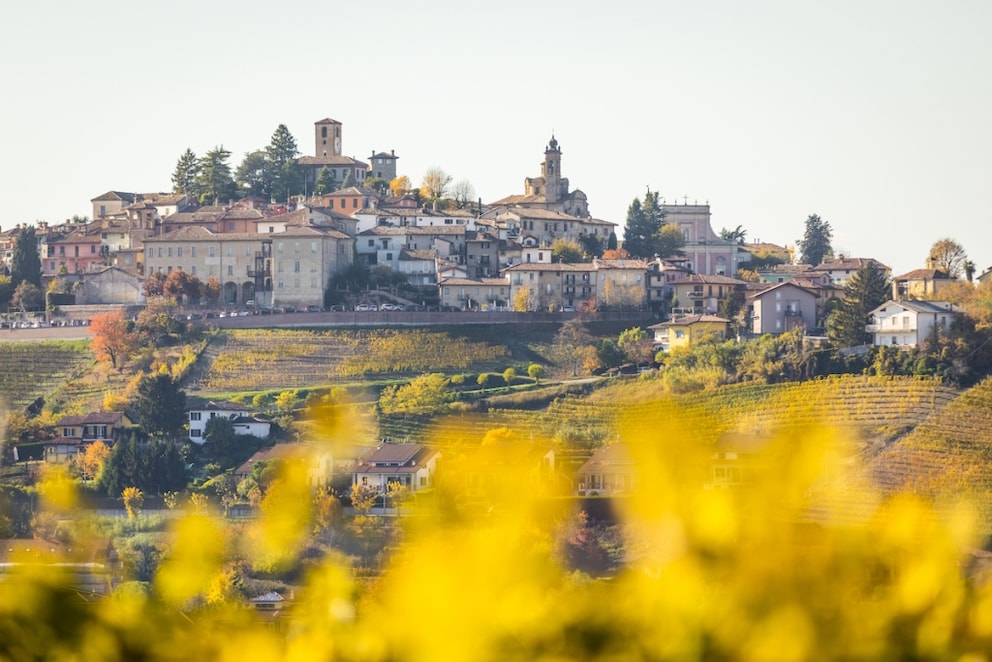
Old Castles in the Langhe Roero Region Are Being Repurposed
Wine may have made the region famous. Now, however, top restaurants, cozy trattorias, and many exceptional hotels are doing their part to bring the wine region between Asti and Barolo out of the shadow of Tuscany.
Some of the old Castelli, such as the Relais & Chateau Castello di Guarene, are now hotels. In 2014, the 18th-century castle of the Counts of Roero became a hotel. Due to strict monument protection requirements, hardly anything was changed. Some rooms, therefore, look more like a museum. The suites are furnished with antique furniture.
Although the Castello di Guarene is enthroned high on a mountain, it is right in the middle of this region of short distances. The best Barolos, Barberas, and Barbarescos grow within a radius of 50 kilometers to the right and left of the Tanaro River. The most beautiful wine villages are correspondingly close to each other.
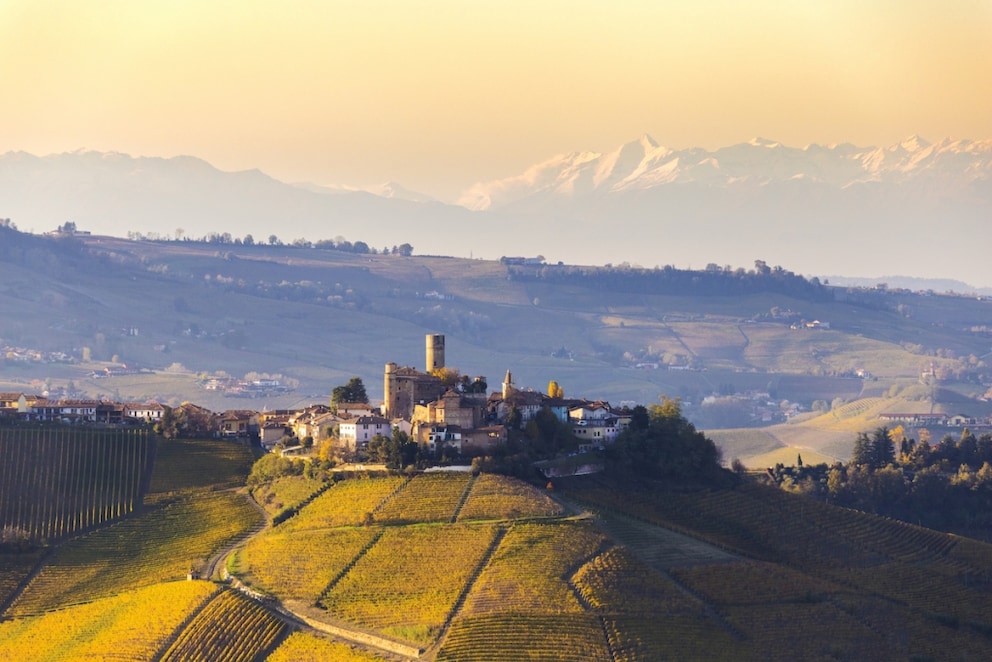
Feasting on the Famous Alba Truffle
There is another good reason for a gourmet trip to the Langhe region in northern Italy. The Alba truffles are the most prized “tartufi” in Italy. This type of mushroom fetches up to 10,000 euros per kilo at auction. Gourmets appreciate their unique taste. Almost everything in the region, especially in the town of the same name, revolves around this delicacy from September to December. October is peak season. This is also when the world-famous truffle market is held in Alba at the weekend.

The 3 Best Food Regions in the World Are in Europe

The 9 Most Charming Places on Lake Garda

The Dreamlike Stretch of Coast in Italy That Is Still a Well-Kept Secret
How to Get There
The Barolo wine-growing region in Langhe Roero is an hour’s drive south of the Piedmontese capital, Turin. It is 20 minutes to Alba and 40 minutes to Asti. The nearest airports are in Turin and Milan.
With material from dpa

